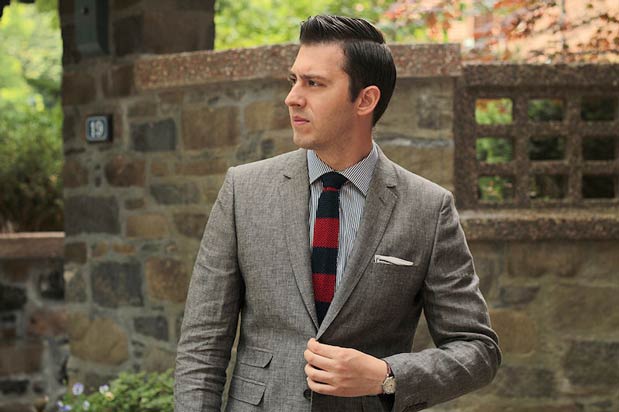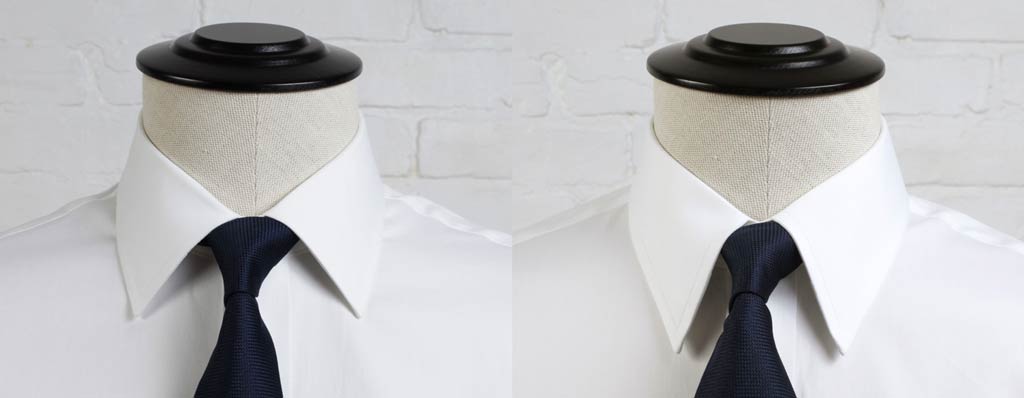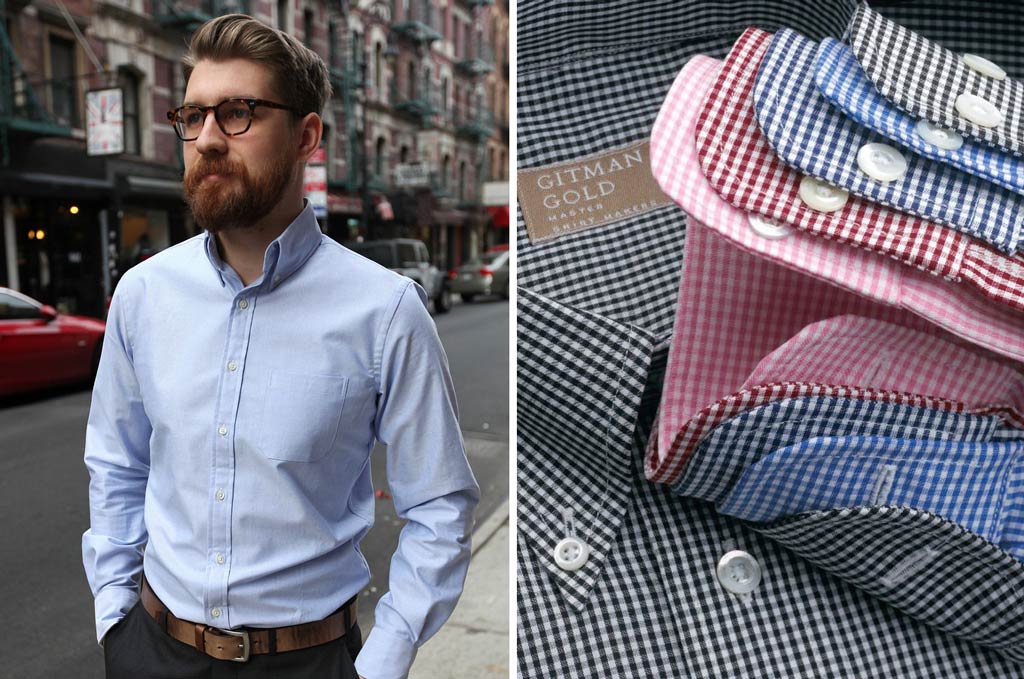With our last “Pairs Well With” piece, we dressed up the Seiko SARB033 by matching it with a classic navy business suit. That pairing was a bit of a departure for worn & wound, with our aesthetic generally leaning towards the casual end of the menswear spectrum. But we know how daunting it can be to shop for a suit (we’ve all been there), or well-fitting shirts and shoes, so we wanted to use that opportunity to give our readers some tried-and-true suggestions to make the whole process less of a head-scratcher.
Today’s piece is in keeping with that notion, but it delves a little deeper. We’ll take a closer look at fabric, fit, tailoring, footwear, and accessories. Though the advice below is by no means comprehensive, it is meant to keep you looking your best and any buyer’s remorse at bay. Let’s get started.
Color and Fabric
Suits today come in every color under the sun, but for a suit you plan on wearing often, stick to a pattern-free navy or dark gray in worsted wool–a durable, mid-weight (10-12oz.) cloth that can be worn comfortably year-round. From weddings to job interviews, these two colors fit the bill for almost any occasion, and they’ll be easy to pair with a number of different shirts and shoes (more on that later).

Worsted wool comes in a number of different grades. Lower-end wool is made of yarns with a 60-80 twist, or the number of times an inch of yarn has been twisted. On the higher end, there are the high-twist wools like the Super 100s, Super 110s, Super 120s, and all the way up to Super 200s. Don’t assume that a higher number automatically denotes a better value. Higher-twist fabrics, while lavish, are far more expensive and delicate than their lower-twist counterparts, and are really an extravagance (and, as some might argue, a marketing ploy). Instead, opt for a suit made around the Super 100s-120s range, which today can look just as luxurious and is far more sensible for an everyday suit.
After you’ve gotten a handle on the staples, you can consider getting more adventurous with your fabrics. For the summer months, you can play with lighter fabrics like linen, cotton, and seersucker. Come winter, you can explore heavier cloths (around 16-20oz.) like tweed and cashmere. Color is also something to consider, as well as patterns like pinstripe, windowpane, and herringbone. Whatever you decide to do, just remember to keep it on the simple side of things.

THE JACKET
One of the best ways to figure out what looks good on you is to go to a big department store, make several laps around the sales floor, and then try on as many different brands as possible (tedious, I know). It’ll be worthwhile because it’s really one of the only easiest ways to figure out your aesthetic and size. Once you have an idea of what you want, grab a salesperson and work with them to narrow your choices.
The following guide will cover aesthetic and fit details you need to be aware of when shopping for a suit.
Shoulders: The first is something I see countless men getting wrong — the shoulders. Men often wear their suits too big, with shoulder pads that protrude well past their natural shoulders. A suit’s shoulders should comfortably hug yours and the seam should rest at the corner of the shoulder. The shoulder should also be smooth, without any weird bumps or protrusions. If you see a divot (a small crease) right below the seam, then it’s likely the jacket is at least a size too big.

If you’re experiencing issues with the shoulders despite having the right size, then the issue may actually be the shape of your shoulders. Some jackets are cut for men with sloped shoulders, and others for squared shoulders. Whatever your body type, trying on different brands will allow you to see what cut works for you. And remember, it’s important that a suit’s shoulders fit perfectly off the rack because there is very little a tailor can (cheaply) do if the shoulders are too big or too small.

Chest/Waist: No matter how nice the suit, if the jacket is too big or too small in the chest/waist, you simply won’t look good. Luckily, there are several ways to make sure you’re working with the right size. If the jacket is too small, the fabric will strain and pull, creating unsightly creases when the jacket is buttoned. The correct fit should allow you to comfortably slip an open hand between your jacket and shirt. If you can then make a fist and the jacket becomes snug, you’ve got the right size.
If the chest fits but the waist is too loose, a tailor can take in and shape the waist to create a desirable “V” silhouette. This alteration is common, and will run about $50. On the other hand, if the waist is too tight, then it’s unlikely that it can be let-out because few off-the-rack suits have the necessarily seam allowance to do so.
Length: The jacket length should be approximately half the height of the distance between the base of your neck and the ground. From the back, the tails of the jacket should cover your backside. From the front, your jacket should reach the midpoint between your knuckle and the end of your thumb (with your arms hanging down and relaxed). Most companies offer jackets in three lengths: short, regular, and long. It’s important to get the length right from the beginning, because any alteration shortening or lengthening a jacket is expensive and can ruin its portions.
Sleeves: It’s highly unlikely that a jacket’s sleeves will fit you off-the-rack. In my experience, most sleeves tend to run far too long, and I generally have to chop off an inch to achieve my desired length. You should ideally be able to see a quarter-inch to a half-inch of shirt cuff. Anymore than that, and your jacket sleeves are too short; any less, and they’re too long.
With that said, I would definitely opt for a jacket with slightly longer sleeves, since it’s generally much easier to shorten them than it is to lengthen them. If the sleeves need to be adjusted, it’s best to buy a suit without working buttonholes on the cuff, since they can be removed and reattached easily after the sleeve is shortened. If you have working buttonholes on the cuff, the alteration becomes much more difficult (and expensive) since the sleeves will have to be removed and adjusted at the shoulder seam. Sleeve shortening should generally run $20 per sleeve.
Buttons/Button Stance: One often-overlooked consideration is the number and placement of buttons. Most professional suits feature two or three buttons, with single-button jackets generally reserved for trendier purposes. By far, the better option of the two is the two-button jacket. Two-button jackets generally have a lower button stance (the placement of the jacket’s top button) and the result is a deeper “V” (the point where the lapels come together) that elongates the torso and makes you look taller. This alteration will run about $55.
And remember, never button the bottom button (unless you’re wearing a single button jacket).
Lapels: There are three main lapel styles: the notched, the peak, and the shawl. A notched lapel is defined by the eponymous “notch” created when the bottom of the collar and the top of the lapel meet and form a 75% angle. A peak lapel is defined by edges pointing upward toward your shoulders, essentially closing the aforementioned “notch.” The shawl lapel has a continuous curve without any breaks or points, and is generally found on tuxedos or more fashion-forward suits.
For our purposes, a notch lapel is ideal as it is the most versatile style of the three (the peak lapel has dressier origins). Lapel width is another consideration, though it should be noted that width is often a consequence of the times. Today, a medium-sized lapel of anywhere between two-and-three-quarter inches and three inches is ideal (the width of your lapel should be in proportion to the width of your tie).
THE PANTS
Suit pants shouldn’t fit like a pair of jeans. They should, however, fit trim and tailored, with the waistband sitting comfortably around your navel. Make it a rule to avoid pleats. Even if you’re on the heftier side, pleats won’t do anything expect make you look bigger. A pair of flat front pants are ideal no matter what the situation, and a modern straight fit will look right on most individuals. If you’re on the thinner side, you can always have a tailor take the legs in, or create a slight taper if you deem it necessary.

Since most pants come with unfinished hems, it will be up to you and your tailor to shorten the legs to an appropriate length. The most important consideration here is the break, or the horizontal line in the fabric that happens where the pants meet the shoe. I opt for a quarter break, which means that the pant leg is shortened so that it rests slightly on top of the shoe, creating only the tiniest “break” in the fabric. The other options are the classic full break, which results in a substantial crease, and the more fashion-forward no break, which leaves pants will “floating” over your shoes (think The Beatles circa 1964). The quarter break is a happy medium between these two extremes. Hemming the pants should run approximately $15 without cuffs, and $25 with cuffs.
There are also some minor, but still important, details to consider when it comes to your pants. If your pants have belt loops, you should wear a belt (and don’t forget to match the color of the belt to your shoes). Also, ask your dry cleaners to press the pants with a vertical crease — a must have for dressier trousers. And while there are no hard rules about cuffs, I would suggest avoiding them if you’re sticking to lighter fabrics and are on the shorter side; cuffs can wreak havoc on the proportions of those of us who are vertically challenged.
THE DETAILS
Shirts: Shirts should be trim, but not tight. When buying a shirt, make sure you get the neck and shoulders right. Everything else, from slimming down the body to slimming down the sleeves, can be handled by a tailor. The easiest way to check for the correct collar size is to stick two fingers against your neck with your collar done up. If you can do that comfortably, then the collar fits. Otherwise, most department stores have on-hand tailors who will take your measurements and help you find the correct size.

There are also a number of different collar types to choose from. My recommendation would be to stick to three specific collars: the forward-point, the medium-spread, and the button-down. The forward-point collar is one of the most common shirt collars, with a smaller spread (or collar width) that favors rounder faces. The medium-spread collar has a slightly wider spread than the forward-point, and is well suited for those with longer faces. The button-down collar is a more casual option that will look great with or without a tie.
When it comes to color, I like to keep things simple: white, blue, and pink. If you’re more adventurous in your color palette, feel free to play around (though you should probably avoid pastels, unless it’s Easter). The key is to keep things simple. Once you’ve gotten comfortable with colors, you can start playing with classic patterns like stripes, gingham, and tattersall.

Shoes: Shoes will anchor your outfit. A cheap pair of shoes, or simply the wrong pair, can negate whatever effort you may have put in up top. While there are a number of different options out there, go with either balmorals (also known as oxfords, with their defining feature being closed lacing), or bluchers (open lacing). Both are appropriate to wear with a suit, and they can often be paired with a dark pair of jeans for a smart look.
When it comes to shoes, I’d recommend splurging a bit. Cheaper shoes can be uncomfortable (I once owned a cheaper pair of modern Florsheim wingtips with fiberboard insoles that destroyed my feet). They are also more likely to fall apart after a season or two, usually as a result from shoddy construction and cheaper materials. Well-made shoes, however, can last a long time if properly taken care of. The American shoemaker Allen Edmonds offers one of the best values around, with a number of different styles to choose from. Check out the Strand, Park Avenue, McAllister, MacNeil, Carlyle, and Kenilworth models. If you go to one of their retail locations, a sales associate will measure your feet and find a pair of shoes that will fit just right. And if you have wide, narrow, or just problematic feet, Allen Edmonds’ wide selection of sizes will simplify what can otherwise be an aggravating experience.

With regard to color, stick to dark brown and black, both of which look great paired with navy and dark grey suits. Once you start getting into lighter colored suits, then you can try lighter colored shoes to match. I’m also a big fan of suede shoes, with brown suede looking especially attractive when paired with a grey suit. And remember, it’s generally good practice match your leather accessories to your shoes.
Read our patina primer to learn some proper shoe-care techniques.
Ties and Pocket Square: “Less is more” is a good rule to follow when it comes to your neckwear. Opt for something classic in wool, silk, or cotton (wool being more weather-appropriate in the cooler months, and cotton in the summer months). If your shirt is simple, try a patterned tie. If your shirt features a pattern, pair it with a simple monochromatic tie. Also, don’t be afraid to play with texture. Knitted ties are a popular and attractive option.

Generally speaking, the width of your tie should match the width of your lapels. For most modern cuts and styles, I prefer a width of two-and-a-half inches to three inches. And remember, the four-in-hand knot is really the only knot you need to know.

The pocket square should be indiscreet, and a complement to the rest of your outfit. It should also never match the tie. The safest choice is a simple white cotton pocket square. A more adventurous option is to play with patterns (if your shirt is striped, try a checkered pocket square) and fabrics like silk and linen, and wool for the winter months.
If you have any questions or just any general advice, leave a few words in our comments section. We’d love to hear from you.
by Ilya Ryvin
You can follow Ilya on Instagram: @RyvinI









 Featured Videos
Featured Videos







